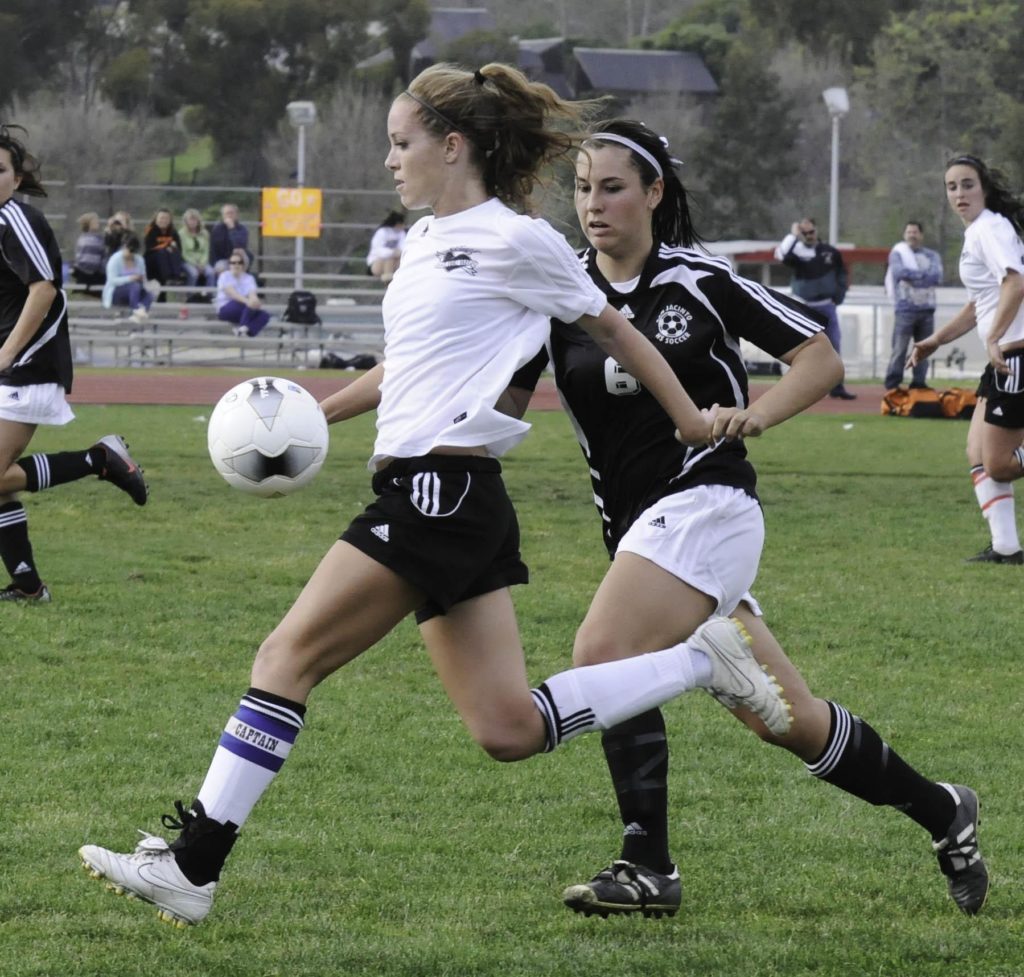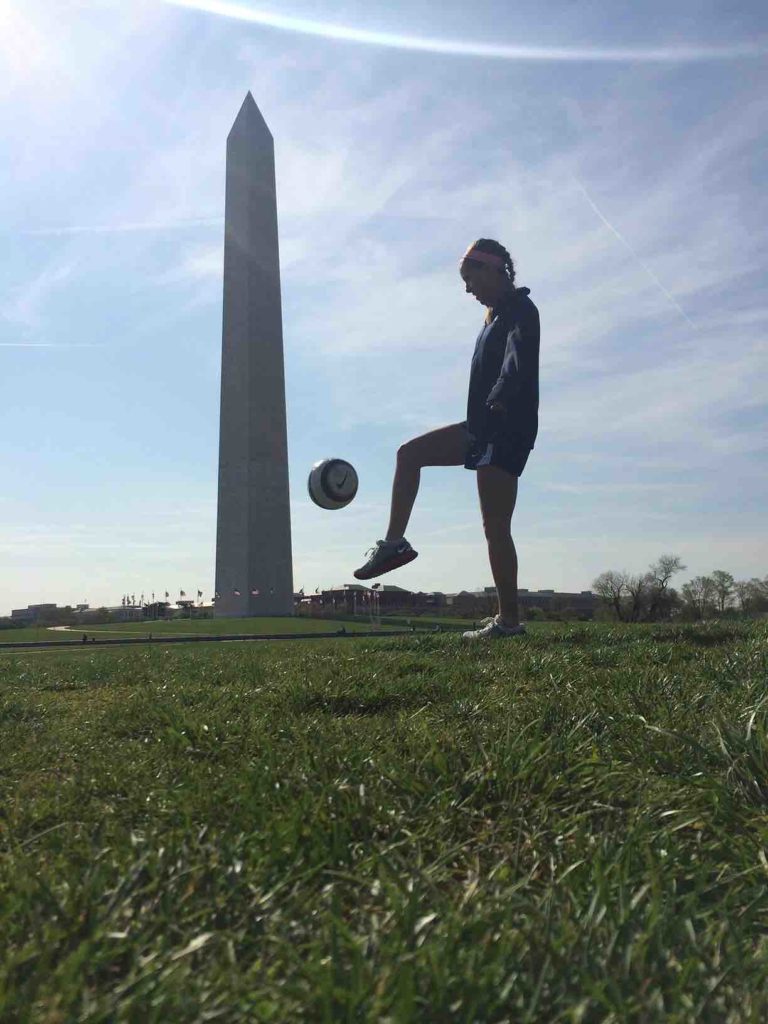Playing competitive sports from high school to college showed me the value of high-quality nutrition and taking care of my body.
“Feed the cheetah” was a common phrase yelled by a teammate’s parent in my early soccer days. It was his way of telling my teammates to slip the ball through the defenders so I, the forward, could run as fast as I could to get the ball and score. This phrase coincidentally now ties into one of my main focuses: how to fuel for optimal performance.
I grew up playing many sports, all of which included the infamous orange slices at halftime. We’d also down sports drinks and enjoy the treats parents were assigned to bring after the games. Getting donuts after a basketball game was almost more exciting than playing the game itself as a 7-year-old. At some point, these sweet treats were finally overruled by some parents. I enjoyed them while they lasted!
Pre-College Sports – Middle School
As I went through middle school and high school sports, parent involvement at practices and games dwindled, and we were given more responsibility as athletes. Even though there wasn’t a huge focus on nutrition, I was fortunate enough to have parents who valued good nutrition. I always had something to eat before a game or practice, and lunch worked its way in between games. This was impressive since some weekends consisted of 5 soccer games and a basketball game within two days. Knowing about a natural anti-inflammatory like tart cherry juice would have been very helpful!
Pre-College Sports – High School and Club Soccer
Club soccer added onto the exercise load and was a whole new level of competition. Unfortunately, for me, this resulted in more injuries. I attribute it to likely not doing enough strengthening exercises, poor mobility, and a weak nutrition focus. My club soccer days would have been a perfect time to experiment more with my nutrition and to figure out better ways to fuel my performance. But as with most high school athletes, we didn’t have the resources at the time. After all of the training, hard work, and fighting through injuries, I was recruited to play Division 1 college soccer.

Playing a Division 1 College Sport
When I got to college, the training load took on a whole new level. Each year, preseason consisted of a minimum of two workouts a day, for at least two weeks. If we were lucky, we got a workout or two taken off of the schedule. In the regular Fall season, between practice and lifting, we were still exercising about three hours a day. As you can imagine, this skyrocketed my daily energy needs.
With my minimal sports nutrition knowledge, the primary indicator that I needed to start eating more for college soccer was how hungry I was. All. The. Time. I was amazed by how much I could eat and still be hungry two hours later. My teammates and I would joke about it because eating that much was a new concept for us all. Having access to a sports dietitian at the time would have been invaluable, and I’m sure it would have improved all of our performance. A dietitian I used to work with always used to use the analogy of fueling a race car. If you try to put regular gas in a high octane vehicle, it can’t reach its peak performance. If you’re an athlete trying to take your game to the next level, you need to fuel your body with the right fuel.
Eating to Fuel Exercise
For the average person exercising anywhere from 15 minutes to an hour on a given day, eating every two hours may not make any sense (and may even lead to unwanted weight gain). But strenuous workouts for three hours, six days a week, will ignite a new way of living and eating. Soccer is a stop and go sport, so we were using both our aerobic and anaerobic energy systems throughout practices and games.
It wasn’t until sophomore year that I took a step back and started to assess my performance with what I was eating. I followed my passion for exercise science and nutrition and changed my major. I was lucky to be able to learn about the body, how it works, and how it responds to exercise – all while playing a demanding division 1 sport.
Sports Nutrition for Injuries
I was frequently getting injured. And while many of those injuries were due to the pure physicality of the sport, I knew there was more I could do. Nutrition was the puzzle piece I had been missing.
I started to do better about having a good breakfast before our 7:15 am practice. I had a recovery snack directly after practice or lift at 10:30 am. Timing my food intake around exercise helped me in class too.
The puzzle pieces were finally fitting together, and my physical and mental performance were benefiting from it. Between my courses, I would read a lot, trying to get more answers about a balanced diet.
Meeting Energy Needs
Even though I was seemingly eating all of the time, I likely wasn’t meeting my energy needs. Underfueling is such a common thing among athletes and is an often unrecognized factor in not being able to perform how they’d like. Proper timing is also crucial. Not to mention, the culture on the team and how athletes can positively (or negatively) influence one another.

Life After a College Sport
As any former collegiate athlete will tell you, it was a big adjustment once senior season was over. Going from over a decade of sports that nearly consume all of your time, to having all the freedom in the world, is confusing and challenging. Should you still work out over an hour every day? What happens if you don’t stay fit? Should you pay more attention to what you’re eating?
It is through my college athletic experience, time after college sports, and my chosen profession that I have been able to gather the tools to help athletes and other people wanting to live a balanced lifestyle. A big part of this role is to bridge the gap between college sports and the “real world.” One of the primary purposes of my blog is to provide a resource to an active person of any age to help guide them towards healthier habits. Similar to training to reach a level of fitness or performance goals, it also takes a while to achieve health and nutrition goals. But the result is so worth it.
Nutrition is at the core of so much that we do. So whether you’re a high school athlete, college athlete, former college athlete, coach, or regular exerciser, hopefully, you can gain something from my story to take your lifestyle to the next level.

